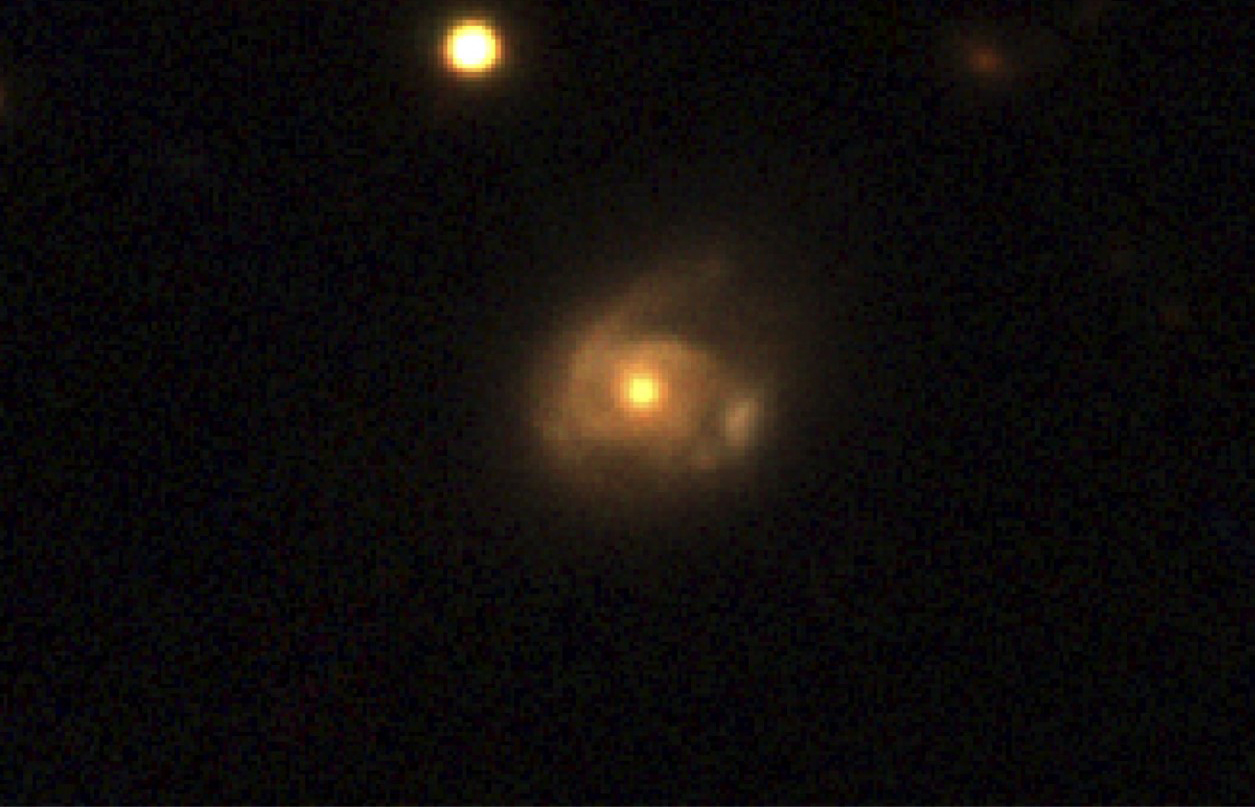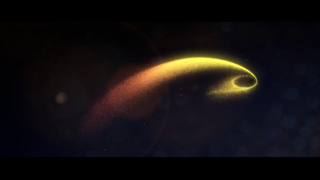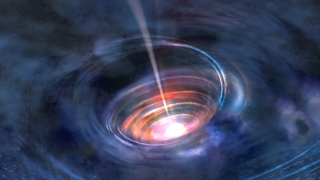Universe
ID: 14408
Using NASA’s Neil Gehrels Swift Observatory, which launched in 2004, scientists have discovered a black hole in a distant galaxy repeatedly nibbling on a Sun-like star. The object heralds a new era of Swift science made possible by a novel method for analyzing data from the satellite’s X-ray Telescope (XRT).
When a star strays too close to a monster black hole, gravitational forces create intense tides that break the star apart into a stream of gas. The leading edge swings around the black hole, and the trailing edge escapes the system. These destructive episodes are called tidal disruption events. Astronomers see them as flares of multiwavelength light created when the debris collides with a disk of material already orbiting the black hole.
Recently, astronomers have been investigating variations on this phenomena, which they call partial or repeating tidal disruptions.
During these events, every time an orbiting star passes close to a black hole, the star bulges outward and sheds material, but survives. The process repeats until the star loses too much gas and finally breaks apart. The characteristics of the individual star and black hole system determine what kind of emission scientists observe, creating a wide array of behaviors to categorize.
On June 22, 2022, the XRT captured Swift J0230 for the first time. It lit up in a galaxy around 500 million light-years away in the northern constellation Triangulum. Swift’s XRT has observed nine additional outbursts from the same location roughly every few weeks.
Scientists propose that Swift J0230 is a repeating tidal disruption of a Sun-like star orbiting a black hole with over 200,000 times the Sun’s mass. They estimate the star loses around three Earth masses of material on each pass. This system provides a bridge between other types of suspected repeating disruptions and allowed scientists to model how interactions between different star types and black hole sizes affect what we observe.
Swift J0230’s discovery was possible thanks to a new, automated search of XRT observations called the Swift X-ray Transient Detector.
After the instrument observes a portion of the sky, the data is transmitted to the ground, and the program compares it to previous XRT snapshots of the same spot. If that portion of the X-ray sky has changed, scientists get an alert. In the case of Swift J0230, astronomers were able to rapidly coordinate additional observations of the region.

Swift Spots a Snacking Black Hole Using a New Trick
When a star strays too close to a monster black hole, gravitational forces create intense tides that break the star apart into a stream of gas. The leading edge swings around the black hole, and the trailing edge escapes the system. These destructive episodes are called tidal disruption events. Astronomers see them as flares of multiwavelength light created when the debris collides with a disk of material already orbiting the black hole.
Recently, astronomers have been investigating variations on this phenomena, which they call partial or repeating tidal disruptions.
During these events, every time an orbiting star passes close to a black hole, the star bulges outward and sheds material, but survives. The process repeats until the star loses too much gas and finally breaks apart. The characteristics of the individual star and black hole system determine what kind of emission scientists observe, creating a wide array of behaviors to categorize.
On June 22, 2022, the XRT captured Swift J0230 for the first time. It lit up in a galaxy around 500 million light-years away in the northern constellation Triangulum. Swift’s XRT has observed nine additional outbursts from the same location roughly every few weeks.
Scientists propose that Swift J0230 is a repeating tidal disruption of a Sun-like star orbiting a black hole with over 200,000 times the Sun’s mass. They estimate the star loses around three Earth masses of material on each pass. This system provides a bridge between other types of suspected repeating disruptions and allowed scientists to model how interactions between different star types and black hole sizes affect what we observe.
Swift J0230’s discovery was possible thanks to a new, automated search of XRT observations called the Swift X-ray Transient Detector.
After the instrument observes a portion of the sky, the data is transmitted to the ground, and the program compares it to previous XRT snapshots of the same spot. If that portion of the X-ray sky has changed, scientists get an alert. In the case of Swift J0230, astronomers were able to rapidly coordinate additional observations of the region.

Related
Credits
Sophia Roberts (Advocates in Manpower Management, Inc.): Producer
Sophia Roberts (Advocates in Manpower Management, Inc.): Narrator
Sophia Roberts (Advocates in Manpower Management, Inc.): Editor
Jeanette Kazmierczak (University of Maryland College Park): Science Writer
Scott Wiessinger (KBR Wyle Services, LLC): Project Support
Chris Smith (KBR Wyle Services, LLC): Animator
Sophia Roberts (Advocates in Manpower Management, Inc.): Narrator
Sophia Roberts (Advocates in Manpower Management, Inc.): Editor
Jeanette Kazmierczak (University of Maryland College Park): Science Writer
Scott Wiessinger (KBR Wyle Services, LLC): Project Support
Chris Smith (KBR Wyle Services, LLC): Animator
Please give credit for this item to:
NASA's Goddard Space Flight Center. However, individual items should be credited as indicated above.
NASA's Goddard Space Flight Center. However, individual items should be credited as indicated above.
Science Paper:
Monthly quasi-periodic eruptions from repeated stellar disruption by a massive black hole
Short URL to share this page:
https://svs.gsfc.nasa.gov/14408
Mission:
Swift
This item is part of these series:
Narrated Movies
Astrophysics Features
Keywords:
SVS >> X-ray
SVS >> Black Hole
SVS >> Astrophysics
SVS >> Space
SVS >> Swift
SVS >> Star
NASA Science >> Universe
SVS >> Supermassive Black Hole
Monthly quasi-periodic eruptions from repeated stellar disruption by a massive black hole
Short URL to share this page:
https://svs.gsfc.nasa.gov/14408
Mission:
Swift
This item is part of these series:
Narrated Movies
Astrophysics Features
Keywords:
SVS >> X-ray
SVS >> Black Hole
SVS >> Astrophysics
SVS >> Space
SVS >> Swift
SVS >> Star
NASA Science >> Universe
SVS >> Supermassive Black Hole















